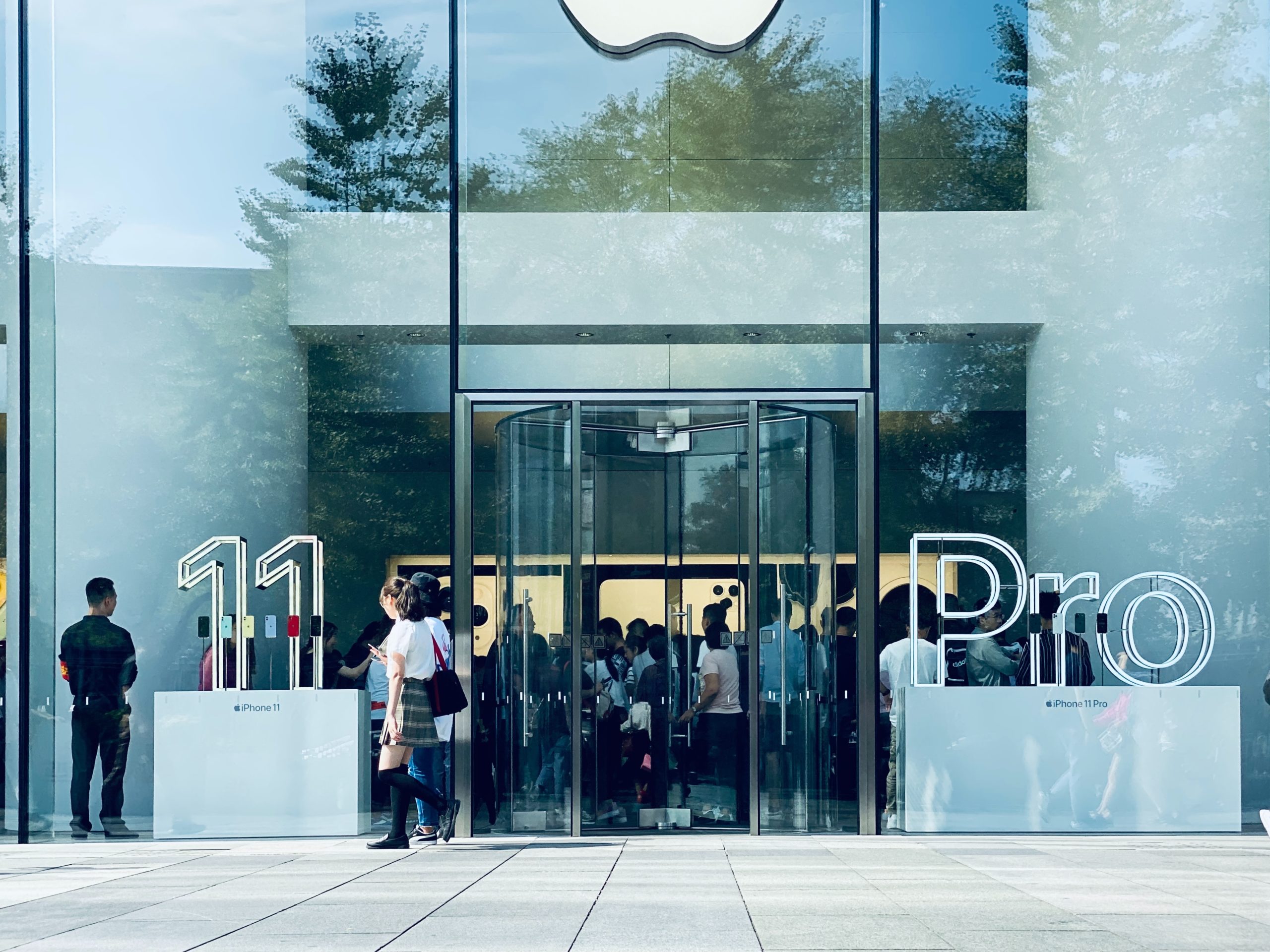With all of the tracking capabilities available in today’s mobile phones, computers, televisions, and intelligent personal assistants, some people fear that the surveillance state of George Orwell’s classic 1984 has become a reality. Well, it has. Kind of.
Now, before you go screaming into the night (pulling a Ron Swanson-esque mad dash into the forest away from all cell towers) give us a chance to sell you on the benefits of geolocation signals, and how they improve digital marketing for both businesses and consumers. So, with all this talk about how Big Brother is watching, it is time for you to familiarize yourself with geolocation marketing, geofencing and geotargeting.
How Location-Based Marketing Works
Location-based marketing collects anonymized data about a person’s physical location using signals sent by a user’s digital device, such as GPS coordinates, IP addresses, WiFi networks or the triangulation of cell phone towers. Smartphones and mobile devices are constantly trying to figure out where they are in the world, continually pinging cell towers and WiFi networks to gather data. Once a device figures out where it is, it shares its location with all different geographically-driven apps – like weather widgets, restaurant directories, and search engines.
This information is also shared with ad networks, allowing advertisers to accurately pinpoint a user’s location and effectively advertise to consumers based on their location. Marketers are able to use this information through advertising platforms to serve ads for local businesses to potential customers nearby, with a radius as narrow as just one mile.
Even if a user turns off GPS capabilities on their mobile device, their cellphone’s location can still be tracked using other kinds of signals your mobile networks send out. Companies are constantly advancing the bluetooth capability in digital devices to target with an even narrower radius using beacons. Now, just being in the same room as a beacon could trigger an ad.
The Virtual Turf of Geofencing
Geofencing creates a hyper-specific virtual bubble around a location, and constantly updates while a person is on the move. Ads inside of the geofenced bubble can be viewed across multiple devices as users browse the web. Geofencing takes full advantage of the location data collected by your mobile devices, and digital advertisers can display ads to potential customers inside of the geofence radius to notify them of local deals.
Let’s say you travel to Orlando for a digital marketing conference. While you’re idly listening to keynote speeches about “corporate synergy,” an eye-catching ad pops up on your laptop for a concert later that night, which just so happens to be near the same venue as your conference. After you click the ad, those ads follow you around the web while you’re at the conference, appearing multiple times in multiple places reminding you to make post-conference plans.
The Geotargeting Distinction
Geotargeting is similar to geofencing but it only delivers ads to people who meet a certain criteria. You specify the parameters of your audience, such as their demographics, interests, and behaviors, as well as targeting a specific and defined geographic radius.
Geotargeting is an important digital marketing tactic to businesses that rely on driving in-person traffic. It gives marketers the ability to target an audience that is within a specified proximity to your location. Instead of spending money on impressions from users far away from your business, you are able to show your ads to an audience much more likely to convert.
During your Orlando marketing conference an ad pops up in your Facebook feed for a Pay-Per-View boxing match airing later that night at a nearby sports bar. You’ve been targeted because you’re a male, in your 30’s, and have liked images of Mike Tyson’s face tattoo. The conference-goer on your right didn’t see that ad, he’s never shown an interest in boxing. The conference-goer on your left saw the same ad because she follows Floyd Mayweather on Instagram.
Geotargeting benefits the end user because, without doing any manual research of your own, you now have two great options for how to spend the evening! Live music because it’s convenient for you, and the boxing match because it’s interesting for you – and marketers don’t have to waste their money reaching other conference-goers with different interests.
Which works better for your audience?
Geofencing and geotargeting can be used across mobile, tablet and desktop devices. (Fortunately, your walkmans, beepers, and Tamagotchis are safe from ad networks.) In terms of marketing, geolocation marketing is most effective after you figure out who your target customer is.
If your business is looking to appeal to the masses (customers of all ages and interests), then the wide scope and broad appeal of geofencing will likely work in your favor. However, geotargeting is better suited for your advertising goals if your consumer base consists of a more specific demographic. As the usage of mobile devices continues to grow, the accuracy and availability of geotargeting data will thrive.
Restaurants, for example, might enjoy a broad appeal across demographics, everybody enjoys eating at a restaurant. As an advertiser, you might want to target everyone within a five mile radius of your location. But a steakhouse would be wasting money advertising to non-meateaters, they could use audience exclusions to remove vegetarians and vegans from their targeting.
Implementing geo-location marketing for your brand
Conversion is critical, which is why it’s crucial to find the right mobile marketing platform that reinforces your online campaigns. Google Ads is one of the easiest advertising networks for SMBs to use, it allows you to get pretty specific with your geotargeting and run both search and display advertising campaigns.
Facebook Ads is another powerful network. There are predicted to be 221.6 million Facebook users in the United States in the year 2021, and because people use social media to express their personal interests, there is a greater ability to control (and get really specific) about your audience segments. SMBs can take advantage of the Facebook Pixel, a free tool for businesses to track their website visitors on Facebook. The Facebook Pixel is why advertising on Facebook is so effective – and pretty much everyone (even your Boomer relatives) use Facebook.
For businesses that have larger budgets to play with, or larger areas to target, some of the more popular platforms include Blis, Foursquare, Placed and PlaceIQ. Again, there are a lot of moving parts within geolocation marketing, and you want to be sure you’re utilizing the right tools.
The Future of Geolocation Marketing
Despite geolocation marketing proven to be 20 times more effective than standard display ads, some businesses are still on the fence about the benefits. The main issue preventing geolocation marketing from exploding is the concern people have for their own, and their customers, privacy.
Geolocation technology allows businesses to tailor information and customize the user experience. But, when you feel like a digital ad has targeted you with a bizarre amount of insight into your personal life (to the point where you’re worried it can read your mind) maybe you would look at the company targeting you a little differently. To a marketer, this is all about customer engagement and enhancing the user experience; to a consumer it feels like an invasion of privacy.

As more companies utilize location-based advertising, we can further explore brand awareness and consumer purchase intent. Apple put beacons inside their stores, and customers that were inside the building could be notified through the Apple Store app on their phones. If a customer was looking at Apple accessories, they would receive a mobile push notification pointing them to reviews on the Apple Store.
Sure, Big Brother technology can feel like an affront to our privacy and our peace of mind but, when used effectively, geolocation marketing is win-win for marketers and consumers. Marketers don’t waste valuable ad dollars, and you don’t have to see irrelevant ads. As long as marketers are honest with consumers about their mind-reading, mobile device infiltrating, geolocation technology, we’ll avoid an Orwellian, dystopian future. But only time will tell!


